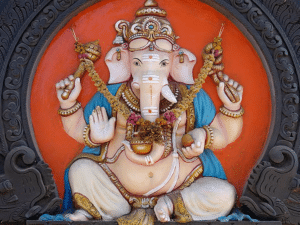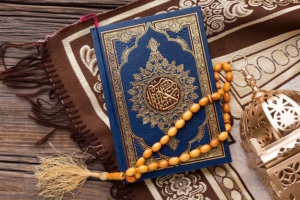DCPA NEWS CENTER
Enjoy the best stories and perspectives from the theatre world today.
Enjoy the best stories and perspectives from the theatre world today.
Hinduism, Catholicism, and Islam are three of the world’s most populous and ancient religions. They are frequently seen as being at odds with one another, and wars have been fought for more than a millennium among them. Oppression and persecution by religious majorities still take place, but the play Life of Pi offers another possibility, in which all religions can be seen as equally valid and can be worshipped simultaneously.
Here’s a brief look at the three that dominate the play, their histories, and beliefs – and the many commonalities they share.
Hinduism

The world’s third largest religion, Hinduism, comprises 1.2 billion followers, predominantly in India, Nepal, Bangladesh and those countries’ diasporas.
Hinduism has many denominations and followers who belong to no denomination. Its foundational texts are both written and oral, including the Vedas and Mahabharata, which includes the Bhagavad Gita.
The dharma is the Sanskrit word, meaning “to support or hold,” that describes the principles and behaviors espoused by Hinduism. It stems from the Vedic tradition (1500-500 BCE) and is also practiced by Buddhism, Sikhism, and Jainism. Its orders and customs are believed to uphold life and the universe. Other principles of Hinduism include karma (action, intent and consequences), samsara (cycle of death and rebirth), puruṣārthas (goals of human life), artha (prosperity/work), kama (desires), and moksha (deliverance from those desires, culminating in rebirth).
Unlike Christianity and Islam, Hinduism is based not in divine revelation, but in principles and practices derived from philosophy and tradition. Hindus view all life as a manifestation of the divine. As a result, the religion is pluralistic and does not put itself above other religions. It does not proselytize.
Henry David Thoreau:
“Whenever I have read any part of the Vedas, I have felt that some unearthly and unknown light illuminated me. In the great teaching of the Vedas, there is no touch of sectarianism. It is of all ages, climbs, and nationalities and is the royal road for the attainment of the Great Knowledge. When I read it, I feel that I am under the spangled heavens of a summer night.”
Catholicism
Catholicism is the largest Christian church, with more than 1.28 billion followers (combined with other Christian denominations, it is the world’s largest). It traces its roots back to the Roman Empire, shortly after the time of Jesus. Unlike Hinduism and Islam, Catholicism has a central authority, the Pope, who is elected to a lifetime position by the cardinals who represent Catholic communities around the world. The Pope sets doctrine and leads any alterations in religious practice.
Catholicism’s core beliefs stem from the Nicene Creed, adopted in 325 at the First Council of Nicaea, which was convened by Roman Emperor Constantine. The creed states that Jesus is divine and the son of God. Following the death of Jesus, the 11 remaining apostles spread the gospel (“good news”), spreading the religion through their travels.
The Catholic Biblical canon includes the 46 books of the Jewish Tanakh, or what Christians call The Old Testament, and the New Testament, which includes the four Gospels of Mark, Luke, Matthew, and John, which recount in various degrees the life and teachings of Jesus, and 23 other books, many of which date to the first century.
Catholicism has seven rites, or sacraments, central to its practice:
Islam
Islam is the world’s second largest religion, with 1.9 billion followers. It traces its beginnings to the prophet Muhammed around 610 C.E. Born in Mecca, he reported being visited by the archangel Gabriel and receiving his first messages from Allah (God) in a cave near there. At the time, Arabia was predominantly polytheistic, but also included Christians, Jews, and Zoroastrians. To escape persecution by polytheists, Muhammad and his followers moved to Medina, where he amassed followers whom he led to conquer the city of Mecca.
There are Five Pillars of Islam:
As Life of Pi points out, while each of these religions are unique, they do share commonalities. All are noted for their extraordinary religious art, which has added to the culture of the world. Both Catholicism and Islam are monotheistic religions, which include Jewish prophets in their teachings (Islam also includes Jesus as a prophet). Each have religious texts, whether the Bible, the Koran, or the Mahabharata. All have moral guidelines toward treatment of the poor and the sick. And Pi? He finds solace and guidance in all three.
